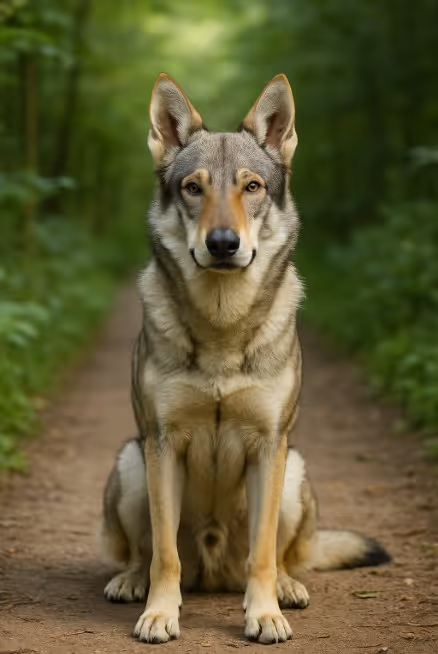The Czechoslovakian Vlcak (also spelled “Vlčák”) is a striking and powerful breed born from a mix of German Shepherd and Carpathian wolf. Originally developed for military use, this wolf-like breed is highly intelligent, loyal, and athletic, but not for the faint of heart. Vlcaks thrive with experienced, active owners who provide firm training and meaningful work. Wondering “Are Czechoslovakian Vlcaks good apartment dogs?” Only with significant daily exercise and expert management.

The Czechoslovakian Vlcak was developed in 1955 in former Czechoslovakia as an experiment in crossing German Shepherds with Carpathian wolves. Spearheaded by Karel Hartl, the goal was to create a working dog with the trainability of a shepherd and the stamina of a wolf. Officially recognized in 1982 by the Czechoslovak military, the breed has since gained global attention for its endurance, intelligence, and wild appearance.
This breed resembles a wolf in both build and expression, with a muscular, agile frame.
The Vlcak is a relatively low-maintenance breed but does experience seasonal shedding.
This is a high-endurance working breed that needs structured outlets for energy.
The Vlcak is intelligent but also independent and strong-willed.
This athletic breed benefits from a diet designed for high-energy working dogs.
Czechoslovakian Vlcaks are generally robust but may inherit certain issues from their parent breeds.
Due to the breed's unique nature, responsible sourcing is essential.
Are Czechoslovakian Vlcaks good apartment dogs?
Not ideal. They need space, exercise, and mental stimulation to thrive.
Do Vlcaks get along with other dogs?
With proper socialization, yes—but same-sex aggression and prey drive can be issues.
Are they good for first-time dog owners?
No. This breed is best for highly experienced owners.
Do Vlcaks shed?
Yes—especially during seasonal coat blows in spring and fall.
Are they legal everywhere?
Some municipalities may have restrictions—always check your local bylaws.
Czechoslovakian Vlcak vs German Shepherd—what’s different?
Vlcaks are more independent, aloof, and wolf-like in behavior and appearance; Shepherds are more biddable and adaptable.
Do they bark a lot?
No. They’re typically quiet and reserved.
Are they good with kids?
Not ideal for households with small children—best suited to calm, older kids with supervised interactions.